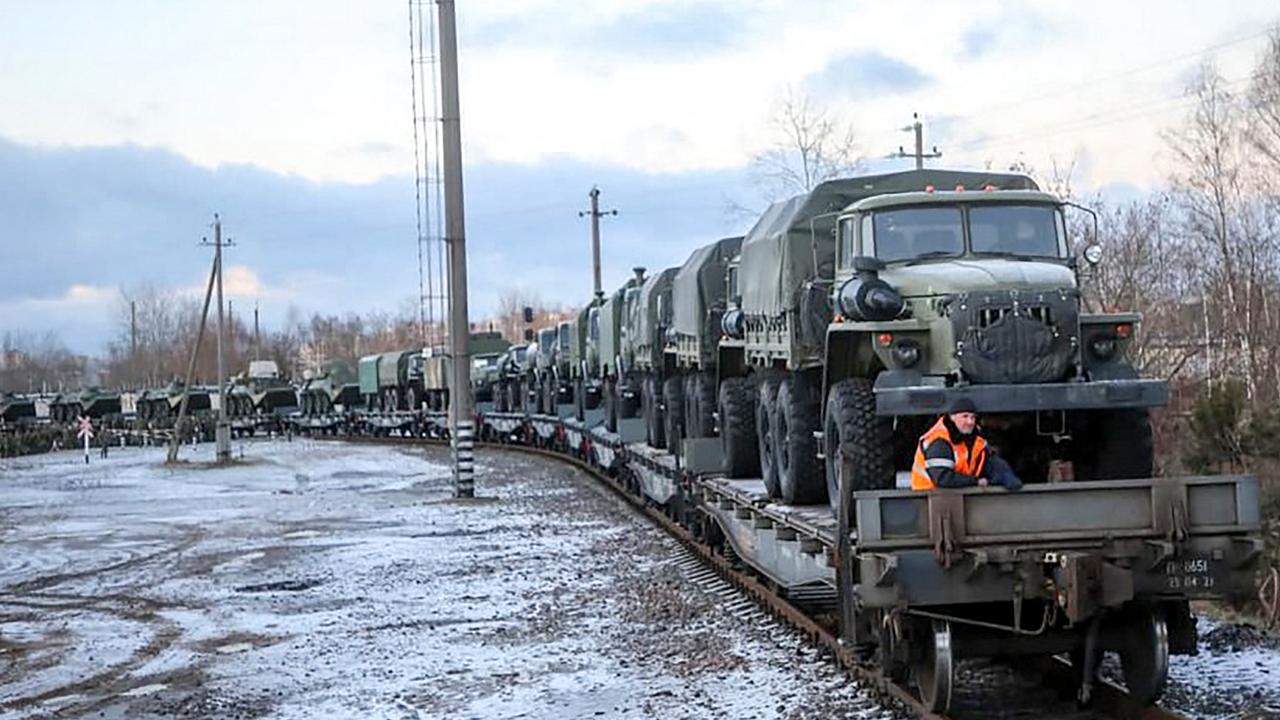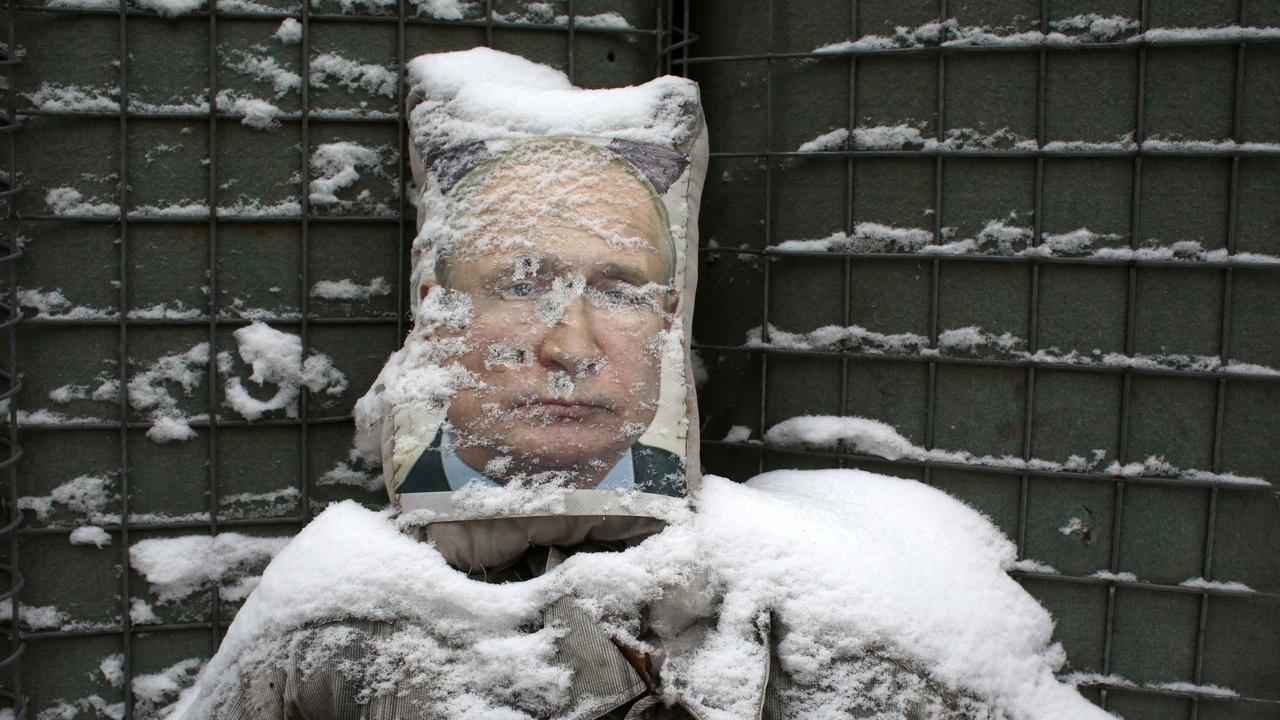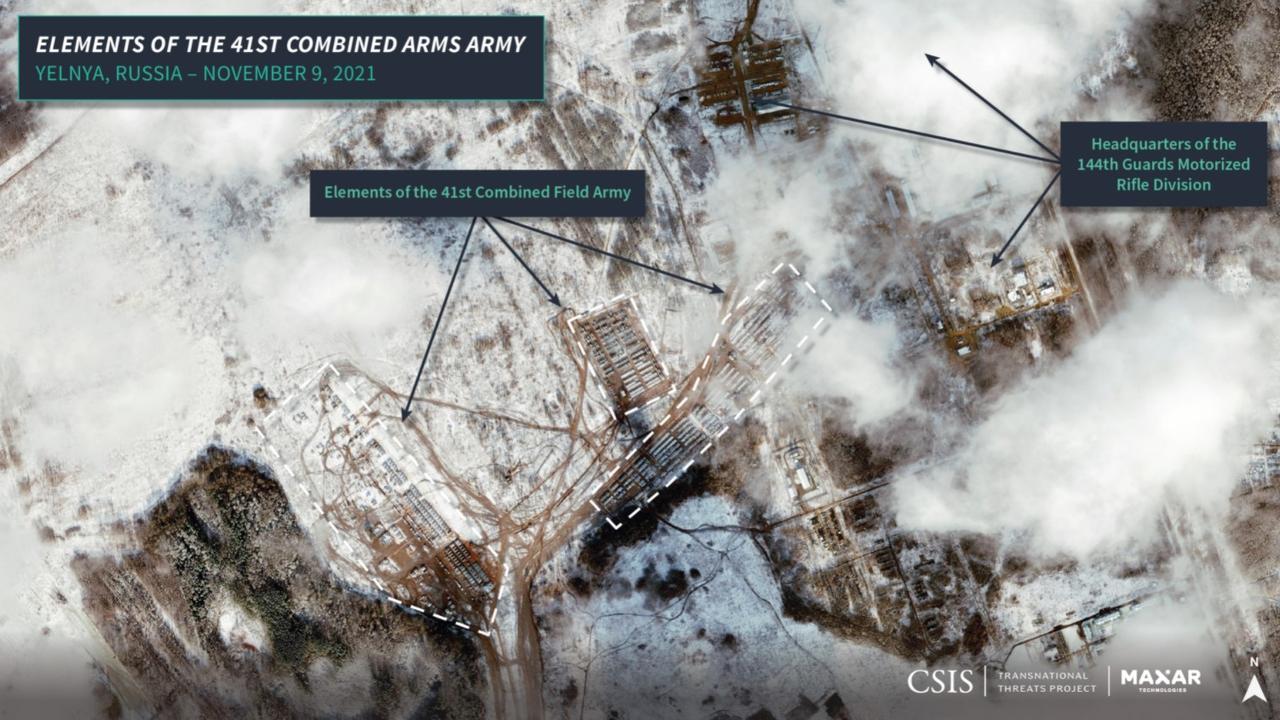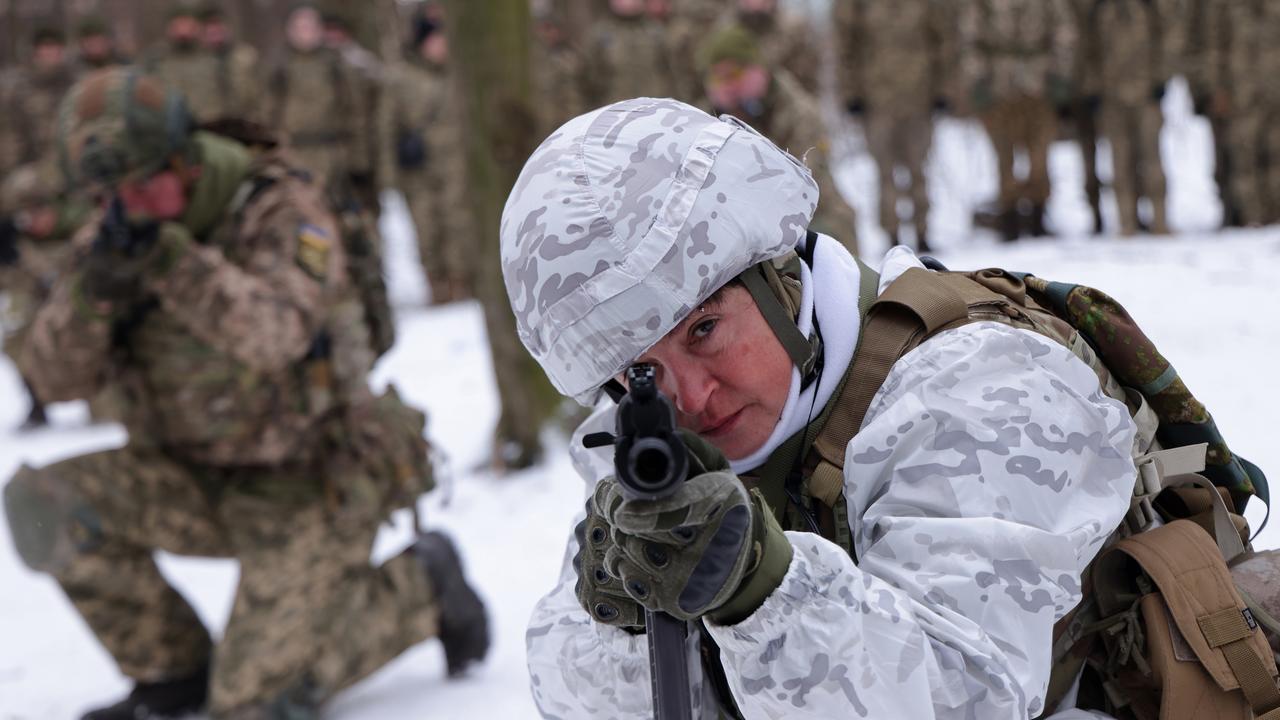Big clue that shows Russia is ready to invade Ukraine
There’s been posturing for 12 months and now there’s a sure sign that last-minute preparations for invasion are well underway.
For months, the world’s been watching Russia mass troops and tanks on its borders with Ukraine. Is it a bluff? Is it a political wedge? Or will President Vladimir Putin invade? Here are the clues to look for.
War is a complex thing.
Main battle tanks. Artillery. Strike jets. These are just the tip of the spear. A vast support network must be put in place to be effective. Without it, they’re toothless tigers.
Moscow has successfully slipped such a mobilisation under the radar. The bulk of the force was left in place after scheduled ‘war games’ early last year. All it needed was a last-minute surge of specialist equipment.
That’s well and truly underway.
Everything is almost in place, from ammunition carriers to grave digging units.
Now, according to the Scowcroft Center for Strategy and Security, it’s a matter of watching for cyberattacks, “snap” military exercises, and evacuations of non-combatants. Not to mention distracting diplomatic crises elsewhere.

The pace of fresh cyberattacks in Ukraine began ramping up last week.
Russia has announced unscheduled ‘war games’ in neighbouring, subservient Belarus.
On Sunday, the United States ordered many of its embassy staff in Kiev to evacuate.
And dissent has well and truly been wedged among its NATO opponents.
War: The difference between games and reality
Moscow’s military presence near Ukraine has been causing concern for almost 12 months. Nearly a quarter of its frontline tanks, artillery and armoured vehicles were left sitting idly in open dispersal camps. Tens of thousands of troops didn’t go home after the manoeuvres were over.
It was an intimidating act. But not a deadly one.
The nonpartisan US-based think tank Atlantic Council said it was a “threatening force, to be sure”. But it wasn’t a fully balanced force able to fight a sustained, high-intensity war.
“Russia had not deployed crucial combat platforms and enabling capabilities and units, including modern fighters and air-defence systems; intelligence, surveillance, and reconnaissance (ISR) and electronic-warfare systems; and logistics and combat-sustainment capabilities and units,” Lieutenant Colonel Tyson Wetzel told the Atlantic Council.
But, over the past week, Moscow has suddenly begun putting these missing pieces in place.
It’s turned out to be a job it could achieve relatively quickly. And that’s why its invasion intentions have been such a surprise.
The Russian army is primed and ready, “setting the conditions to execute a multi-domain attack on Ukraine should that be Putin’s decision,” said the Atlantic Council.
But there’s one last move he’s yet to make.
“Russia is going to need to call up reservists out of civilian life if it is serious about invading and occupying all or most of Ukraine,” says Colonel John Barranco. “That’s going to have an economic impact and cause discontent among the public, so Moscow is unlikely to do it unless it’s serious.”
Snap war games
Unexpected military manoeuvres have long been a mask for invasion. That’s why modern international conventions demand they be telegraphed well and truly in advance.
International agreements put limits on their size and frequency.
But these have been thrown to the wind in Eastern Europe.
Russia and Belarus last week proclaimed a large-scale war game named Allied Resolve 2022. It was to begin immediately.
“This type of exercise can serve two major purposes,” notes the Atlantic Council. “First, it provides a cover for Russia to deploy high-end military capabilities to the region. Second, the exercise, scheduled from February 10-20, provides Russia with an opportunity to conduct an operational rehearsal.”

Russia’s highest-profile weapons are now moving into place. Squadrons of modern Su-35 attack jets have been moved to the area. As have its most advanced air-defence weapons – the S-400 long-range missiles and the Pantasir-S1 point defence systems.
But mostly, it offers ‘plausible deniability’ for its army to advance.
Tanks and troops are being been seen taking up positions just 20km from Ukraine’s border. And Belarusian territory offers a shorter, more direct route for tanks to reach Kiev.
“This exercise is the type of cover action I would plan if I were looking to execute a large-scale military operation,” Lieutenant Colonel Tyson Wetzel told the Council.


But there’s also an element of parading to Moscow’s behaviour.
The movement of vulnerable amphibious assault ships from the Barents and Baltic Seas makes no sense. It would be easier to move equipment by rail. But the high-profile presence of such ships is an age-old act of “gunboat diplomacy”. It could also be a distraction, designed to cause Ukraine to split its forces to defend its coast.
External influences
Fighting in Europe’s winter will be cold. But it’s not especially difficult.
The ground is hard with ice. Trees and foliage have largely lost their cover. But lousy weather will be a problem.
“Russia will want favourable weather conditions for moving around heavy armour, which is why we should be looking for weather reports that the ground is fully frozen and a good stretch of sub-freezing temperatures,” says Colonel Benjamin Johnson. “Weather conditions in Ukraine are not optimal for a Russian ground attack with heavy forces right now, and there is a short window before the normal March thaw.

He also believes Moscow hasn’t deployed enough medical units to be serious about a fight.
“There have been sporadic reports of Russian field hospitals, but we should be looking for reports that they are fully manned with medical personnel,” Colonel Johnson says. “If it intends to attack Ukraine with a heavy force, the presence of large amounts of medical equipment and manned mobile field hospitals will be an indicator. Field ambulances are easy to identify because of the red crosses.”
The calm before the storm
“Has Russia lost the element of surprise, or do its current moves constitute an attempt to preserve it?” asks Commander Daniel Vardiman. “Any military strategist knows how critical the element of surprise is to success. If you don’t have surprise, then the only substitute is overwhelming odds. And Russia has neither.”
But it has given President Putin a megaphone to broadcast his agenda.
Not that it makes any sense: NATO’s constitution is purely defensive. Participant nations must apply voluntarily.
And the reason why former Soviet Union states such as Latvia, Lithuania, Poland, and Ukraine seek admission is Moscow’s aggressive behaviour.
It has, after all, invaded Georgia, seized Crimea and sent troops to assist insurrectionists inside Ukraine.

“Since Russia invaded Ukraine eight years ago and occupied close to 7 per cent of its territory, Ukraine has benefited from billions of dollars in US defence aid and is much better prepared for a Russian offensive than it was,” Colonel Barranco says. “Russia knows all of this. Yet rather than try to quietly engage in a military build-up and regain some element of surprise, it is telegraphing to everyone that it plans to launch a challenging midwinter offensive that risks its mechanised forces getting bogged down in a March thaw if it does not achieve rapid success.”
There’s an old military saying that goes something like: “An army is like a bayonet: You can do anything with it – except sit on it”.
Mobilised armies are expensive. Their appetite for food, fuel, spares is enormous.
But mostly, it’s a matter of morale. The longer they sit at alert, the more the troops get to think. They can start to doubt. They can begin to second-guess their orders. They will think more and more about what’s going on back home.
And an authoritarian strongman like Putin can’t have that.
Jamie Seidel is a freelance writer | @JamieSeidel






